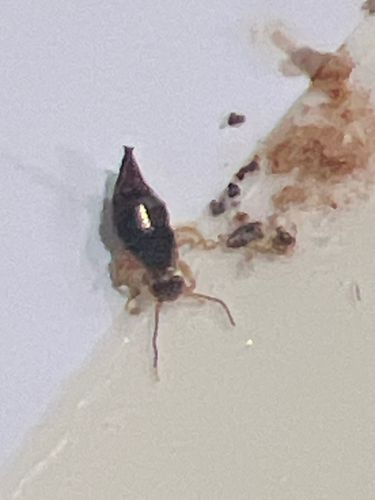Booklouse (likely a Liposcelis species)
Scientific Name: Likely 'Liposcelis spp.' (genus)
Order & Family: Psocoptera (Booklice and Barklice), Liposcelididae (family)
Size: Typically 1-2 mm in length, very small and often difficult to see with the naked eye.

Natural Habitat
Indoor environments, often found in damp, dark, and undisturbed places such as books, stored foods (cereals, grains), wallpaper, and moldy areas. They thrive in high humidity.
Diet & Feeding
They feed on fungi, mold spores, microscopic algae, starches, glues (common in bookbindings), paste, and other organic matter found in their damp habitats.
Behavior Patterns
Booklice are non-jumping insects. They are generally nocturnal and prefer dark, humid conditions. Many species are parthenogenetic, meaning females can reproduce without males, leading to rapid population growth under favorable conditions. They are typically scavengers.
Risks & Benefits
Risks: Mainly considered a nuisance pest. They can damage books, papers, and stored food products by feeding on molds and starches, though the damage is usually minor. They do not bite people, transmit diseases, or cause structural damage. Benefits: In certain outdoor environments, they can play a role in decomposition by feeding on fungi and detritus. However, indoors, they are rarely beneficial.
Identified on: 9/13/2025